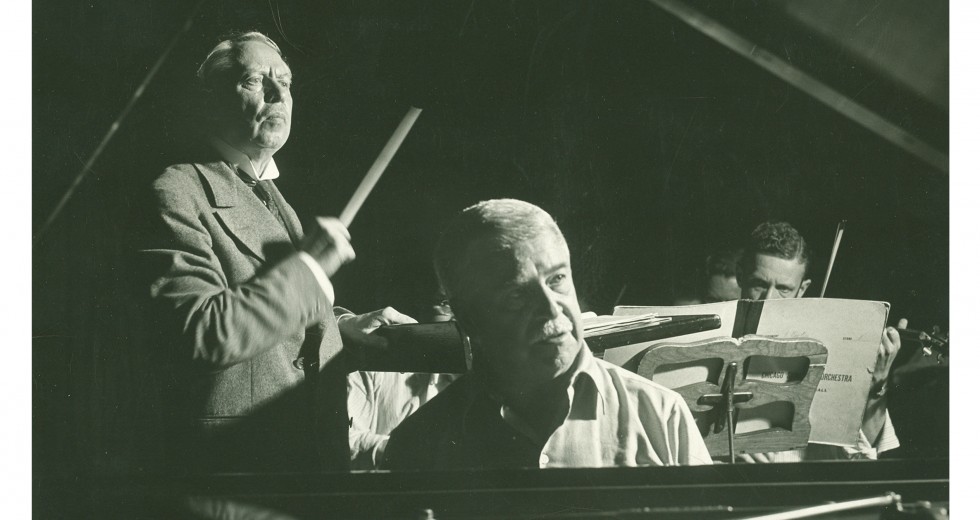
Austrian pianist Artur Schnabel made his debut with the Chicago Symphony at Orchestra Hall on March 9 and 10, 1923, in Brahms’s Piano Concerto no. 1 under Frederick Stock. He first appeared with the Orchestra at the Ravinia Festival during the summer of 1942, performing Beethoven’s Piano Concerto no. 4 (July 11) and no. 5 (July 18), Mozart’s Piano Concerto no. 24 (July 14), and Brahms’s Piano Concerto no. 2 (July 16), all under the baton of George Szell.
Following Schnabel’s July 11 debut before an audience of more than 6,000 (Ravinia’s largest of the season), Cecil Smith in the Chicago Tribune wrote, “Any description of the tremendousness of Schnabel’s performance can at best only brush the surface. Here was music as it is rarely heard, music completely expressed and coordinated, without taint of sensationalism or superficiality and without a suggestion of inadequacy or smallness. . . . The music was warm with sentiment and charged with drama, as the occasion demanded, and yet these emotional qualities were always controlled by a mind which constantly understood the great design of the work.”
The following week, on July 22 and 24, Schnabel and the Orchestra committed Beethoven’s Fourth and Fifth piano concertos to disc with music director Frederick Stock on the podium at Orchestra Hall. To coincide with the release of the recordings, the pianist was to return to Chicago later that fall for performances of both concertos under Stock. Sadly, the Orchestra’s second music director died unexpectedly on October 20, 1942, just after the start of the fifty-second season. As scheduled, Schnabel performed Beethoven’s Fifth Concerto on November 24 and the Fourth on November 26 and 27, but under the baton of associate conductor Hans Lange.
Victor Records released Beethoven’s Fourth Piano Concerto (eight sides on four 78 rpm discs) also in late November. “It would be easy for Chicagoans to turn sentimental about such an album and to gloss over flaws with affection. But it isn’t necessary—in fact, it would be unpardonable condescension. For the performance is magnificent, with the boldness of authoritative style and the clairvoyance of ideal cooperation. It is recorded with superb accuracy, and with intelligent care for spacing, so the ear isn’t left hanging on a phrase while you turn a record,” wrote Claudia Cassidy in the Chicago Tribune. “I came to the conclusion that the piano never has been more successfully recorded. Schnabel’s tone is there in quality, dimensions, and that brilliance of attack that means absolute security. . . . Mr. Stock’s accompaniment is typical of what Chicago took for granted for many a rich season.”
Image above: Frederick Stock and Artur Schnabel onstage at Orchestra Hall in July 1942 (Chicago Sun-Times photo)
This article also appears here.